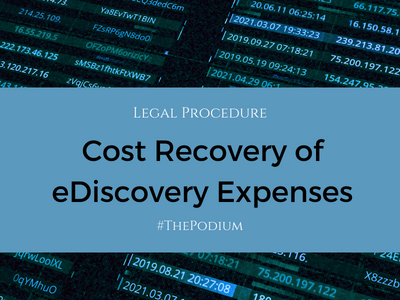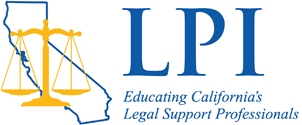
As law firms are increasingly implementing eDiscovery technology, many face challenges when it comes to deciding how or whether to pass those expenses through to their clients. Numerous firms have opted to absorb these costs, afraid of violating ethical standards.
However, pricing models have begun to change and some firms are moving towards a cost recovery or profit model, where expenses such as eDiscovery costs are recovered or even turned into a revenue stream while staying compliant with ethical principles.
Creating a Cost Recovery Plan
Due to the bespoke nature of creating a cost recovery plan, there is little guidance available to help interested organizations begin. Essential to the process will be maintaining open channels of communication between firm leadership and other key players, such as the accounting department. A cost recovery plan will impact revenue, client relationships, and overall business strategy. A good first step is to perform a cost-benefit analysis to identify the advantages that might come from such a plan, as well as the risks involved and how to manage them.
Consider support structure and which groups within the organization will be in favor of the cost recovery plan or against it. Developing an understanding of how different stakeholders will react to this new plan allows for the ability to prepare a response to any concerns that arise.
There are multiple ways to account for eDiscovery expenses as part of a cost recovery model, whether by passing them through to the client as a soft cost or creating a wholly-owned subsidiary that bills the firm for services performed as a hard cost. These fees can typically be passed through to the client in an ethical manner, provided they follow the American Bar Association (ABA)’s guidelines for proper disclosure and reasonableness.
Following Ethical Standards
While most eDiscovery costs cannot be treated as a general overhead expense, there are a variety of ways to allocate the benefit a client receives from the technology service and bill them appropriately. ABA Formal Opinion 93-379 accounts for passing on the costs of in-house services by acknowledging that it is reasonable to establish rates for specific types of expenses. Where there is a reasonable methodology for allocating expenses to those clients benefiting from eDiscovery services and those costs are explained to the client with reasonable notice, passing those costs along should be consistent with ABA Rule 1.5. This pricing model could include recurring expenses such as subscriptions for cloud-based data storage.
What about profit – is it ethical to earn revenue accidentally or intentionally by charging for eDiscovery services as part of a cost recovery plan? In Formal Opinion 00-420, the ABA states that “[…] it is implicit in Formal Opinion 93-379 that profit from providing legal services is expected and appropriate, as long as the total fee is reasonable.” If value to the client can be reasonably demonstrated from eDiscovery-related support services and the principles set out in ABA Rule 1.5 are followed, there is no reason why those expenses should not be recovered or even reasonably profited from.
Challenges and Best Practices
When implementing a cost recovery plan, ensure that billing attorneys understand and support the value of the firm’s services offered to their clients. For example, offering eDiscovery expertise can uncover ESI that may be the difference between winning or losing a case. Therefore, invoicing for those eDiscovery costs is a reasonable measure to take.
If requests to remove these expenses for certain clients are anticipated frequently, develop a process to manage them, including an approval path. Can a decision be reached as objectively as possible, perhaps by comparing future revenue potential with current costs? When examining these costs, remember to include both hard costs such as external vendors, and soft costs, such as work performed in-house on behalf of a client. In most cases, these plans offer added value to clients by using analytics or technology-assisted review to cut document review expenses. Being able to demonstrate this value can help avoid pushback against invoicing for eDiscovery expenses.
Some firms’ accounting software was set up to bill by the hour only and adding billable line items seems impossible. This is a common structure set up to maintain a model of absorbing certain costs and changing to accommodate a cost recovery plan will need to be done carefully. Make sure the accounting and invoicing teams are familiar with what a typical cost recovery invoice looks like. Another way to reduce anxieties is to implement a cost recovery plan during an accounting software change in order to help identify what will be required of the new software.
When adopting a cost recovery plan, open communication is key, not just between a firm’s internal departments but with the client as well. As outlined in ABA Rule 1.5 and restated in Formal Opinion 93-379, discussing fees in advance with a client is paramount to maintaining ethical compliance.
We want to thank First Legal, our business partner for allowing us to share this content with our members.
Categorized in: Legal Procedure
| << previous | next >> |








